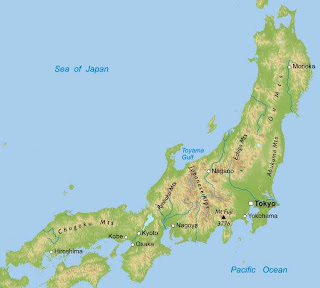Criminal devastation of the rainforest of Los Tuxtlas Veracruz.
Over the past 30 years, the rate of deforestation in Los Tuxtlas has been high, while in 1986 was between 15 percent and 16 percent of the original forest, it is estimated that currently there is only between 7 percent and 10 percent " It is a fact that the lowland forests of almost non-existent. "The Los Tuxtlas Biosphere, considered the last stronghold of wild North America, is dying. Because 50 percent of its 155 thousand 122 hectares is severely affected by deforestation, the looting of animals and plants, and the settlement of entire villages that predate the ant level.
According to the state delegation of the Ministry of Environment and Natural Resources (SEMARNAT), the damage to natural resources in the region of Los Tuxtlas is due to some policies that have encouraged intensive farming and ranching culture, without take into account the value of the forest in the region, among other things, drinking water supply by 30 percent to the municipalities of Coatzacoalcos, Minatitlan, Acayucan, San Andres Tuxtla and Catemaco.
This devastation has been in a situation of threat to 19 families in the region of mammals, 79 birds, 23 reptiles and 19 amphibians. And is that such policies, highlighted the state's delegate Semarnat, Francisco Luis Moreno Quiroga, has prompted the change of land use, illegal logging and generated rural poverty that forces over the area.
So that the Sierra de Los Tuxtlas has lost over the past 50 years much of its natural resources and up to 80 percent of its original area.
CRIMINAL DEVASTACIÓN DE LA SELVA DE LOS TUXTLAS.
En los últimos 30 años, la tasa de deforestación en Los Tuxtlas ha sido alta, pues mientras en 1986 quedaba entre 15 por ciento y 16 por ciento del bosque original, actualmente se estima que sólo queda entre 7 por ciento y 10 por ciento : "Es un hecho que los bosques de las tierras bajas ya casi no existen”. La biosfera de Los Tuxtlas, considerada como el último reducto selvático de América del Norte, agoniza. Y es que 50 por ciento de sus 155 mil 122 hectáreas se encuentra severamente afectado por la deforestación, el saqueo de especies animales y vegetales, y el asentamiento de pueblos enteros que depredan a nivel hormiga la zona.
De acuerdo con la delegación estatal de la Secretaría del Medio Ambiente y Recursos Naturales (Semarnat), el daño provocado a los recursos naturales de la región de Los Tuxtlas se debe a algunas políticas que han favorecido la actividad agrícola intensiva y la cultura ganadera, sin tomar en cuenta el valor de la selva de la región que, entre otras cosas, abastece de agua potable en 30 por ciento a los municipios de Coatzacoalcos, Minatitlán, Acayucan, San Andrés Tuxtla y Catemaco.
Esta devastación ha puesto en situación de amenaza a 19 familias de mamíferos de la región, 79 de aves, 23 de reptiles y 19 de anfibios. Y es que este tipo de políticas, destacó el delegado estatal de la Semarnat, Francisco Luis Moreno Quiroga, ha impulsado el cambio de uso de suelo, la tala clandestina y generado pobreza rural que obliga a la sobreexplotación del área.
De tal forma que la sierra de Los Tuxtlas ha perdido en los últimos 50 años gran parte de sus recursos naturales y hasta 80 por ciento de su superficie original.

Comentarios